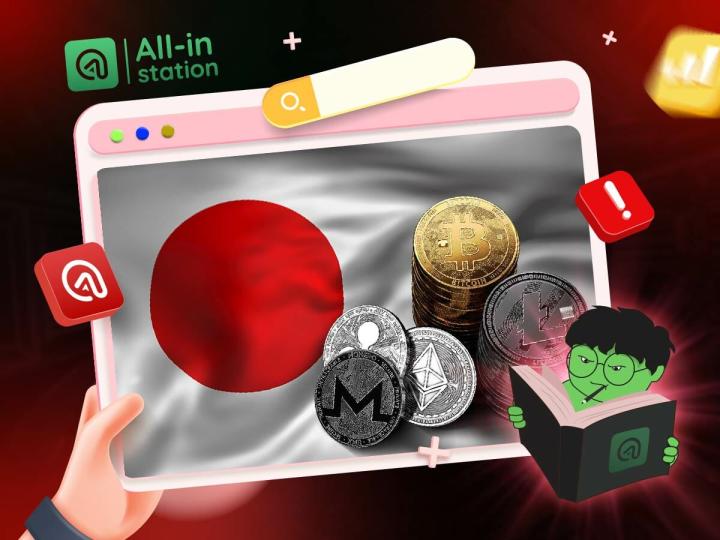Source: Miles Deutscher&Zeneca
Compiled by: Wenser, Odaily
Editor's Note: As the Trump effect gradually weakens and the impact of the global economic and political situation continues to spread, mainstream cryptocurrencies including BTC have recently experienced a significant decline, and there are voices in the market saying that the bull market has ended and the bear market has arrived. The recently fading Meme coin market and the AI Agent concept token projects have also rekindled people's fear of the bear market. The more we are in this moment, the more important confidence is. In view of this, Odaily will combine the "experience posts" of two A8-level big shots in the English-speaking area to sort out the many lessons that can be learned without leaving the table, for readers' reference. Hopefully, when the spring warms and the flowers bloom, every crypto industry practitioner can guard the clouds and see the bright moon.
NFT Whale, A8 KOL Zeneca: Sell and Profit Forever, Sell on Screenshots
In the last cycle, I made tens of millions. Here are a few points I've learned:
1. Sell and Profit Forever
It's usually better to sell early, even if you miss out on some gains. It's better than holding on and going through the ups and downs.
This is because you'll find that almost everything tends towards zero in the end.
So even if you sell early and miss out on some profits, when you look back on that decision in the next few months or years, you'll realize you were a genius!
2. Sell on Screenshots
If you take a screenshot of how much you've made, that's the time to sell.
You don't have to sell your entire position, but usually reducing it by 20-50% is a good idea.
3. Ignore the Noise
Most people on X platform and crypto-related apps have no idea what they're talking about.
The loudest and most confident voices are usually the most clueless, while the quiet ones who can self-reflect are full of wisdom.
4. Confidence Can't Be Borrowed
It's obvious that you can't borrow confidence from others.
If you buy something because someone else bought it or told you it might take off, you're almost certainly going to get rekt.
And then those people will shift the blame to you, while you're anxiously waiting for their next tweet or YouTube video to tell you what to do next.
5. Don't Care What Others Think
Stop trying to impress people.
This is a general life advice, but it's especially applicable in the crypto space.
Wanting to impress friends and family, to be liked and followed, is one thing.
Wanting to impress strangers online to gain attention? Don't be silly.
6. Bitcoin is the One True God
Bitcoin came first, and then everything else.
It took me a long time to truly realize this.
Yes, Altcoins sometimes outperform Bitcoin - sometimes for long stretches - but ultimately, everything flows back to Bitcoin in the long run.
Most people try to trade these Altcoins to get gains far beyond Bitcoin's - less than 5% of people can actually pull this off.
It's like trying to beat the S&P 500 index fund. For most people, the best investment is just to buy the index fund directly.
7. Don't Let FOMO Cloud Your Judgement
The crypto industry always has a way of warping your mind, like a mental illness.
In the last cycle, many of us refused to sell NFTs for $50,000 because we thought "it's undervalued". Many other smart people did the same, and you were no exception.
Herd mentality is real, and it takes a lot of courage to go against the grain - you should try it.
8. Engage with the Real World, Don't Lose Sight of Money's True Value
From this moment on, try to broaden your horizons and also spend time with people outside the crypto industry.
1 SOL or 0.08 ETH may not seem like much (unit bias is real), but think about how much you can accumulate in a day or a year, and what you can do with that money in the real world.
Also, most people are thrilled to get a 10% return on their investments in a year, which is perfectly reasonable.
In fact, this is a good return rate, it's just that crypto has distorted all our notions about investment returns and everything else.
9. Leverage Compounding, Seize Certainties
The power of compounding is astounding.
In fact, you don't need to find 100x growth, often just a few 2x growths in a row are good enough, or even 10-50% annual compounding growth is incredibly difficult to achieve (have you ever thought about how crazy high percentages compound over many years?).
Another way to put it: "Most people overestimate what they can achieve in a year and underestimate what they can achieve in ten years."
A Crypto Researcher Who Lost and Regained Millions: Miles: Take Profits and Losses in Time, Respect Every Dollar
Here are 10 hard lessons I learned after paying millions of dollars in tuition.
Undoubtedly, each crypto cycle will force you to perform better in emotional management.
For me, 2021 was a disastrous year. At that time, my assets reached seven figures, but in the end I almost lost everything.
By this cycle, my investment performance has improved, although the drawdown is still beyond my expectations, but I have managed to preserve most of the investment gains. Well, when you're in the crypto space, you can never stop learning.
1. Sell Early is Better Than Sell Late
I've never regretted selling a coin too early, but I've always regretted not selling in time to lock in profits.
Rather than selling too late and ending up with little, it's better to take profits gradually.
2. Take Profits When It's Time
Many times, I chose to convert my profits into stablecoins, only to find myself chasing the next investment game.
However, when I converted them to fiat or other "real world" investments, those funds may have been temporarily unavailable (for security reasons).
I think it also depends on one's personality.
I'm a restless person, so the more measures I can put in place to prevent impulsive decisions and make myself think, the more beneficial this behavior will be for me.
3. Complacency is Deadly
There was a time when I lied to myself that I was making money, but in reality I was making far too little.
Yeah, I took $100,000 off the table today - "Look how great I am, mom! I'm making money!"
In reality, I still held millions of worthless Altcoins on paper.
I found that I always used my portfolio value as a comfort, rather than the actual stablecoin weight of that portfolio - which is a more important indicator for preserving wealth.
Undoubtedly, the biggest killer in the crypto space is the complacency mentality.
Ignoring warning signs = complacency;
Not taking profits = complacency;
Slow to react to new information = complacency;
Poor planning = complacency;
99% of mistakes in the market can be attributed to some form of complacency.
4. Respect Every Penny
That day I saw this tweet, and it really resonated with me. (Odaily note: KOL Loopify previously wrote that people really don't understand how precious it is to have a $1 million cash reserve. Even with a successful career, it still takes a long time to earn. If you become a top professional in your field, earning $400,000 a year, it might take 5 years to accumulate; if you can earn $200,000 a year, it will probably take 10 years).
For those of us in the Altcoin industry, we sometimes completely lose our sense of value.
For example, last December I made a trade that earned me $1.7 million. Now, I really wish I had half that wealth.
At the time, I felt money didn't matter, because it's easy to be influenced by that kind of excitement.
Always stay clear-headed (even in crazy moments), cherish every penny, because one day you will treasure such money even more.
5. Gradually Accumulate Compound Interest
Most of the mistakes in the market fundamentally stem from the pursuit of fast (and "easy") returns.
But the wealth accumulated in the long run actually comes from the compound returns gained over time.
You should treat each trade as a "gamble", with the goal of increasing your overall chips (like in poker).
6. Don't Be Misled by Target Prices or Profit Targets
The market doesn't care about the target prices you set arbitrarily, whether it's a specific dollar value or a multiple. Chasing targets is a guaranteed win-trade.
If you really reach your target price at some point, then sell. Don't be greedy, and don't change your profit target.
At least, use fewer chips to pursue a new target price, and protect your trading principles.
7. Set Stop-Loss Indicators
At the end of last year, I made a lot of progress in this area. But there was a period (especially in March 2024) when I still didn't do well, and more effective stop-loss could have avoided a lot of pain. It might be as simple as setting a predetermined HTF (high time frame, i.e. longer trading time frame) support level/moving average, reducing positions when the structure breaks; or it can be more advanced, like identifying LTF (low time frame, i.e. shorter trading time frame) loss momentum and re-entering when the market is rising.
In a trending market, this usually works well. But at least have some form of stop-loss indicator, rather than waiting for your position to go to zero.
8. Don't Borrow Confidence from Others
Whenever I buy Altcoins based on someone else's views (rather than my own judgment), the results are not satisfactory.
Refer to others' ideas - but verify independently, establish your own views and beliefs.
Otherwise, you'll end up holding those tokens without any real conviction, or not knowing what to do when that conviction is tested.
9. Don't Hold Any Altcoins Long-Term
Investing in Altcoins is a bit like a maze.
Your default mindset should be that each time you buy, you're trading the Altcoin against the US dollar. (Odaily note: i.e. always pay attention to the exchange rate between the Altcoin and the US dollar, and use this to judge the potential price trend.)
I like this way of thinking, because it formalizes the need to develop a clear take-profit/stop-loss plan. Many people may be lazy in this regard.
"Investing" is not an excuse for poor risk management. Now a trade can last 3 days, 3 weeks, 3 months, 6 months, and in some cases even 12 months.
But remember, this is just trading, your ultimate goal is to accumulate more BTC or other capital.
10. Don't Use Leverage for Contracts Just for the Sake of Risk-Taking
Since this cycle began, I've only had 2 sleepless nights, and those 2 moments occurred when I held a large amount of leveraged contract trades.
Only use leverage to manage risk (such as hedging), not to take on more risk.
If you want to hold long-term, spot is relatively more suitable.







